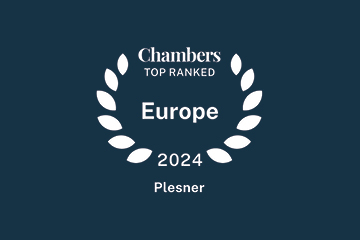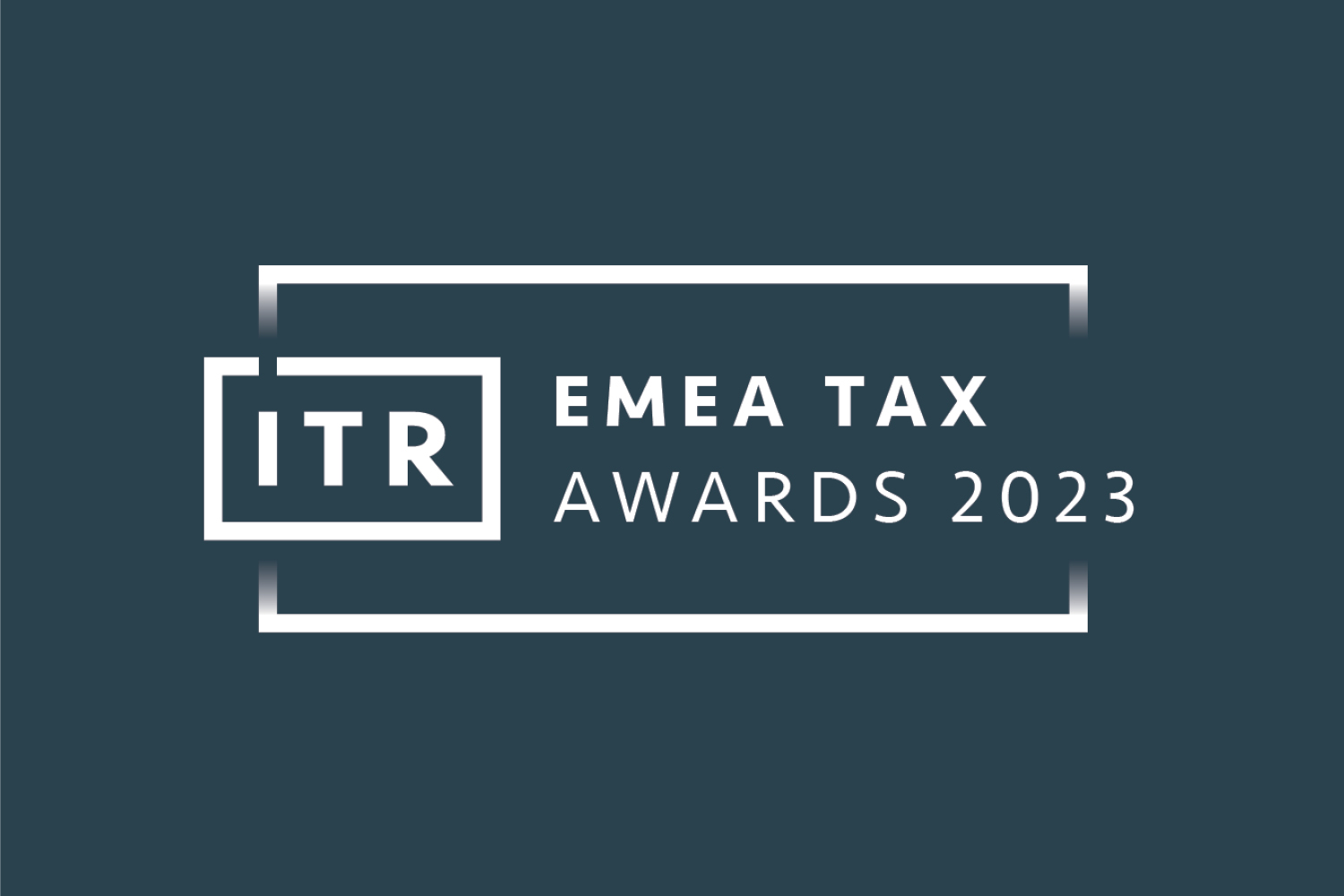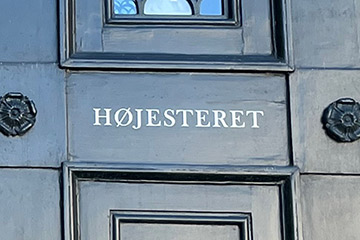Viking Life-Saving Equipment A/S successful in extensive transfer pricing court case
24 May 2023
On 19 April 2023, the District Court of Esbjerg ruled in favour of Viking Life-Saving Equipment A/S in an extensive transfer pricing case and set aside the Danish tax authorities' discretionary increase of the company's taxable income for the income years 2006-2009. The Danish Ministry of Taxation has appealed the case to the Danish Western High Court as the court of second instance. The case was conducted by Plesner.
In 2012, SKAT (the Danish Tax Agency) found that Viking Life-Saving Equipment A/S' ("Viking") taxable income for the income years 2006-2009 should be increased discretionarily, stating that SKAT did not find that Viking's transfer prices for a number of the company's foreign sales and service companies had been agreed on arm's length terms according to Section 2 of the Danish Tax Assessment Act. By a ruling made in 2018, the Danish National Tax Tribunal partially agreed with SKAT's decision, as the Danish National Tax Tribunal found that SKAT was right to make a discretionary income assessment, but reduced the income increase by 50 %. The ruling was brought before the Danish courts by Viking.
The issue of the case before the District Court of Esbjerg ("the Court"), which was heard by three judges over five court days, concerned whether SKAT's discretionary transfer pricing ("TP") correction had been justified.
The question was primarily whether Viking's TP documentation for the income years 2006-2009 was inadequate and, if so, whether it was inadequate to such an extent that SKAT had been entitled to make a discretionary assessment under Section 3B of the then Danish Tax Control Act. In addition, with regard to the TP documentation for 2008 and 2009, it was a separate question whether SKAT had requested Viking to submit the TP documentation to SKAT at all.
Viking's TP documentation for all income years contained a review of Viking's fixing of prices and terms in relation to the sale of life-saving equipment to both internal and external sales and service companies as well as comparability analyses in the form of a comparison of contribution ratios for own and external sales and service companies based on the cost plus method.
On this basis, the Court found that Viking's TP documentation was not inadequate and that SKAT had therefore not been entitled to make a discretionary assessment of the income according to Section 3B of the then Danish Tax Control Act for 2006 and 2007.
For 2008 and 2009, the Court found that the right to make a discretionary assessment presupposes SKAT's request for submission of the TP documentation, just as the Court found that the Danish Ministry of Taxation had not demonstrated that SKAT had made such a request during the assessment process. SKAT had therefore not been entitled to make a discretionary assessment with regard to the said income years. In this connection, the Court further noted that the fact that it must have been clear to Viking that SKAT's review of Viking's transfer pricing also covered the income years 2008 and 2009 did not entail that SKAT could refrain from formally requesting the submission of the documentation.
The question then was whether the Danish Ministry of Taxation had established that Viking's sales prices to its own sales and service companies were not at arm's length, and, more specifically, whether Viking had sold maritime life-saving equipment at prices that were too low to its own sales and service companies, compared to the prices that Viking applied to external sales and service companies.
In this regard, the Danish Ministry of Taxation had particularly emphasised that Viking's TP documentation indicated that Viking's contribution ratios in relation to internal and external sales and service companies were not the same. According to the Danish Ministry of Taxation, the difference in the contribution ratios was in itself an indication that Viking had not acted at arm's length with its subsidiaries.
However, the Court found that the difference in the contribution ratios was the result of commercial conditions which Viking had documented through the presentation of evidence before the Court. Therefore, the Court also found that the Danish Ministry of Taxation had not demonstrated that Viking had sold maritime life-saving equipment at prices that were too low to its own sales and service companies.
In relation to a comparability analysis prepared by SKAT according to the TNM- method, the Danish Ministry of Taxation further argued that such comparability analysis documented that Viking had not acted at arm's length.
In this regard, the Court found that the process of selecting comparable external companies in particular suffered from deficiencies in the reasoning - especially in relation to two issues.
SKAT's analysis was based on Viking's actual external sales and service business partners.
However, SKAT eliminated many of these companies on the general grounds that they were not sufficiently comparable, but without justifying this standpoint specifically in relation to the individual eliminated companies.
After the first elimination, SKAT used - in accordance with SKAT's established practice - the so-called interquartile range (IQR) to further narrow down the dataset. SKAT did not justify why it was relevant and fair to do so.
For these reasons, among others, the Court did not find that SKAT's comparability analysis documented that Viking had acted on terms that did not correspond to arm's length terms.
Against this background, the Court fully upheld Viking's claim that the tax authorities' increase of Viking's income during the income years 2006-2009 was unjustified.
A team from Plesner represented Viking before the Danish courts.
Lasse Esbjerg Christensen and Jef Nymand Hounsgaard argued the case before the court.
The Danish Ministry of Taxation has appealed the case to the Danish Western High Court as the court of second instance.
The issue of the case before the District Court of Esbjerg ("the Court"), which was heard by three judges over five court days, concerned whether SKAT's discretionary transfer pricing ("TP") correction had been justified.
The question was primarily whether Viking's TP documentation for the income years 2006-2009 was inadequate and, if so, whether it was inadequate to such an extent that SKAT had been entitled to make a discretionary assessment under Section 3B of the then Danish Tax Control Act. In addition, with regard to the TP documentation for 2008 and 2009, it was a separate question whether SKAT had requested Viking to submit the TP documentation to SKAT at all.
Viking's TP documentation for all income years contained a review of Viking's fixing of prices and terms in relation to the sale of life-saving equipment to both internal and external sales and service companies as well as comparability analyses in the form of a comparison of contribution ratios for own and external sales and service companies based on the cost plus method.
On this basis, the Court found that Viking's TP documentation was not inadequate and that SKAT had therefore not been entitled to make a discretionary assessment of the income according to Section 3B of the then Danish Tax Control Act for 2006 and 2007.
For 2008 and 2009, the Court found that the right to make a discretionary assessment presupposes SKAT's request for submission of the TP documentation, just as the Court found that the Danish Ministry of Taxation had not demonstrated that SKAT had made such a request during the assessment process. SKAT had therefore not been entitled to make a discretionary assessment with regard to the said income years. In this connection, the Court further noted that the fact that it must have been clear to Viking that SKAT's review of Viking's transfer pricing also covered the income years 2008 and 2009 did not entail that SKAT could refrain from formally requesting the submission of the documentation.
The question then was whether the Danish Ministry of Taxation had established that Viking's sales prices to its own sales and service companies were not at arm's length, and, more specifically, whether Viking had sold maritime life-saving equipment at prices that were too low to its own sales and service companies, compared to the prices that Viking applied to external sales and service companies.
In this regard, the Danish Ministry of Taxation had particularly emphasised that Viking's TP documentation indicated that Viking's contribution ratios in relation to internal and external sales and service companies were not the same. According to the Danish Ministry of Taxation, the difference in the contribution ratios was in itself an indication that Viking had not acted at arm's length with its subsidiaries.
However, the Court found that the difference in the contribution ratios was the result of commercial conditions which Viking had documented through the presentation of evidence before the Court. Therefore, the Court also found that the Danish Ministry of Taxation had not demonstrated that Viking had sold maritime life-saving equipment at prices that were too low to its own sales and service companies.
In relation to a comparability analysis prepared by SKAT according to the TNM- method, the Danish Ministry of Taxation further argued that such comparability analysis documented that Viking had not acted at arm's length.
In this regard, the Court found that the process of selecting comparable external companies in particular suffered from deficiencies in the reasoning - especially in relation to two issues.
SKAT's analysis was based on Viking's actual external sales and service business partners.
However, SKAT eliminated many of these companies on the general grounds that they were not sufficiently comparable, but without justifying this standpoint specifically in relation to the individual eliminated companies.
After the first elimination, SKAT used - in accordance with SKAT's established practice - the so-called interquartile range (IQR) to further narrow down the dataset. SKAT did not justify why it was relevant and fair to do so.
For these reasons, among others, the Court did not find that SKAT's comparability analysis documented that Viking had acted on terms that did not correspond to arm's length terms.
Against this background, the Court fully upheld Viking's claim that the tax authorities' increase of Viking's income during the income years 2006-2009 was unjustified.
A team from Plesner represented Viking before the Danish courts.
Lasse Esbjerg Christensen and Jef Nymand Hounsgaard argued the case before the court.
The Danish Ministry of Taxation has appealed the case to the Danish Western High Court as the court of second instance.







